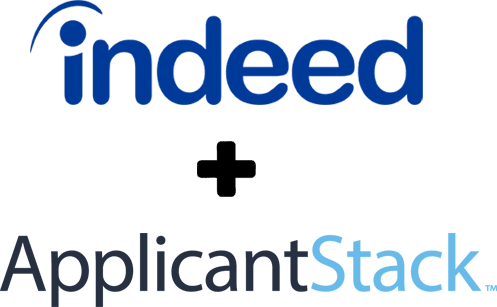The job market is a dynamic, living thing that demands adaptability. For businesses of every size, intuition and personal connection are vital for finding ideal candidates. But they are only part of the hiring puzzle: analyzing recruitment metrics gives a more accurate picture of where your hiring process is succeeding and where you could stand to improve.
Understanding Recruitment Metrics and Why They Matter
Recruitment metrics refer to the data that provide insight into the efficiency and effectiveness of your company’s hiring process. Metrics are individually insightful but the data is also symbiotic, informing the other. For example, if the most expensive recruitment source you use yields the highest quality candidates, it may be a mistake to reduce that budget because an overall budget metric suggested cost-cutting.
Analyzing hiring metrics gives companies ideas on how to work more efficiently, which hiring methods work the best for your type of business, and can even anticipate growth to generate a long-term hiring plan before it’s critical. In small businesses where employees may wear many different hats—including participation in hiring—collecting and reviewing these metrics is essential to focus and coordinate your efforts.
Recruitment Metrics to Track
Consider tracking these important recruiting metrics:
Time to Fill
Simply put, “time to fill” indicates the number of calendar days it takes to find and hire a new employee. The Academy to Innovate HR (AIHR) offers a few different starting points:
- A hiring manager submitting a job requisition
- A job requisition’s approval
- A job posting going live online
The end date is typically when a candidate accepts a job offer. This metric can show internal delays in approvals or posting.
Time to Hire
While “time to fill” analyzes the company’s time efficiency, “time to hire” is a more candidate-centered metric. This number indicates the time from when the candidate applies to accepting an offer. It can show lags in company response time, a leading reason for losing out on a potential hire.
Cost Per Hire
This is a metric that accounts for all the costs your company incurs while hiring new employees. It may include:
- Internal hiring administrative and legal costs
- Cost of job postings
- Advertising costs
- External recruiter fees
- Travel expenses
- Recruitment or hiring bonuses
- Relocation costs
To calculate cost per hire, add up all costs in a time frame and divide it by the number of hires. This metric helps the company know how effective the hiring budget is being used, and where to make adjustments if the cost per hire is limiting the number of new employees you can add in a year.
The average cost per hire is $4,700, according to SHRM data. But some estimates come in as high as three to four times the total salary of the position your company is seeking to fill. It’s worth identifying areas to trim the overall cost.
Application Completion Rate

If your company uses an online application system, this metric can show how many candidates start but never finish the process. It can indicate bottlenecks in the application, or note if candidates consistently leave sections blank or seem to have insufficient space to answer questions. This metric allows you to make the appropriate edits so the application process is smooth for the applicant and provides the right amount of data for the company.
Offer Acceptance Rate
This metric helps you know the percentage of offers accepted by prospective employees. Considering that it always costs you something to make an offer, this metric is valuable in analyzing each step of the recruiting, interviewing, and offering process. If your company has a high initial response rate but a low offer acceptance rate, this may indicate:
- Your job descriptions may be misleading about actual job responsibilities
- Your interview process could be too long or too demanding
- Your communication has some lag time that’s causing you to lose out on desirable hires
Quality of Hire
Once a prospective employee has been hired, analyzing metrics doesn’t need to stop. In the first few months of a new employee’s tenure, you can evaluate whether they are meeting the company’s standards. If you have a trial period, this can be a useful metric to determine whether you and the new employee are a good fit after all.
According to Indeed, “The basic calculation for quality of hire would work as follows: job performance score + social engagement score + productivity score / total number of factors = quality of hire.”
These criteria will vary from company to company, but a noticeable decline in quality of new hires can motivate you to examine the factors that lead to low productivity, for example. Can they be attributed to a point in the hiring process that could use some scrutiny? It’s better to address those issues long before hiring, onboarding, and a period of lesser quality work.
New Hire Turnover Rate
While analyzing quality of hire comes from the company side, turnover comes from the employee side. This metric shows how many new hires stay on for some defined period of time. If you’re seeing an unexpectedly high turnover rate, this can indicate:
- Problems with onboarding
- Confusion about or dissatisfaction with job responsibilities
- Mismatch of employee to supervisor
- Interview mistakes regarding skills or experience
Analyzing Hiring Metrics
Modern software makes gathering hiring metrics a breeze. A tool like ApplicantStack offers reports for a whole suite of data, allowing your company to track recruitment metrics with ease. These reports can provide great insight before a hiring push puts you in a bind.
A budget-conscious company is always looking to save on the bottom line, but the right metrics can do much more than just encourage an overall slash and cut. This data can give you insight if your recruiting spending is in the right places, and offer guidance to reallocate resources to actions offering you the most quality hires. Get access to the reports your company needs to track hiring metrics when you start your free trial.
- 3 Tips to Improve Communication with Applicants - April 26, 2024
- Understanding Contract-To-Hire and How It Works - April 23, 2024
- Should Your Job Listings Include Salary Information? - April 19, 2024










